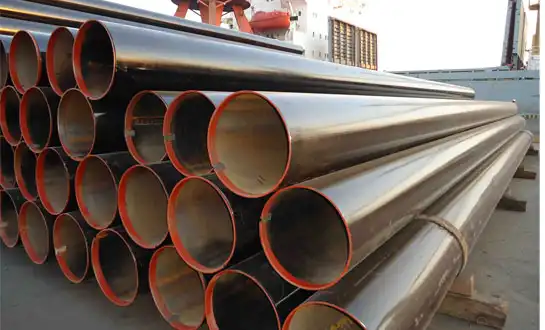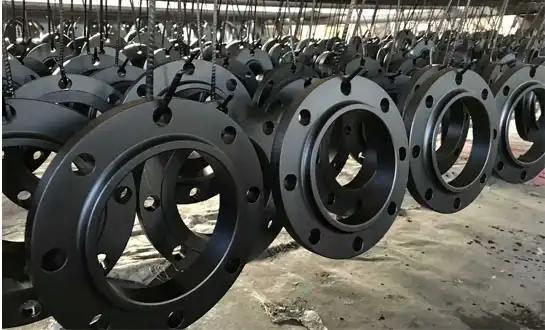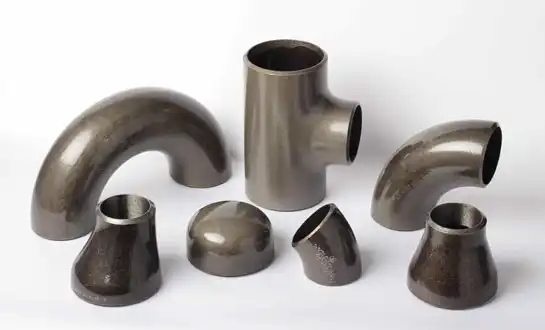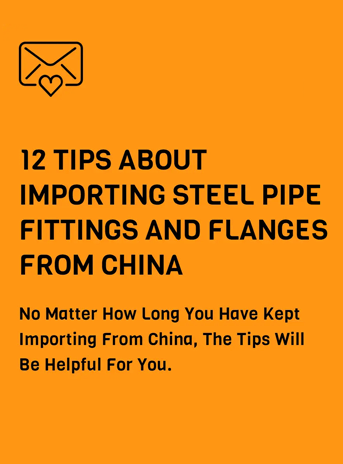Sand Casting vs Investment Casting for Steel Pipe Fittings: Pros & Cons
When choosing how to make steel pipe fittings, the option between sand casting and investment casting has a big effect on the quality of the product, how much it costs, and how well it works for its intended use. Sand casting is a cost-effective way to make huge numbers of parts in different sizes, making it perfect for conventional carbon steel parts used in industrial plumbing systems. Investment casting gives better surface finishes and dimensional precision, which is especially useful for complicated shapes and important uses that need very tight tolerances. Engineers and procurement professionals can choose the best choice for water distribution, gas transmission, and industrial fluid handling systems by knowing the pros and disadvantages of each method and taking into account project needs, budget limits, and performance expectations.
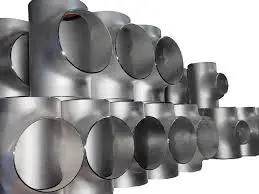
Understanding Sand Casting for Steel Pipe Fittings Production
The Sand Casting Process and Manufacturing Advantages
Sand casting represents one of the most versatile manufacturing techniques for producing steel pipe fittings, utilizing sand molds to shape molten metal into desired configurations. The process begins with pattern creation, around which specially prepared sand is packed within a flask. Molten steel is poured into the cavity, solidifying to form components like elbows, tees, reducers, and flanges. This classic approach may handle almost any size need, from little home fittings to huge industrial connections. The versatility makes it especially useful for bespoke steel pipe fittings when tooling costs need to stay low. Sand molds can be modified relatively easily, allowing manufacturers to adjust designs without substantial capital investment. It's helpful to have this much freedom when making samples or custom layouts for certain pipe uses. This method can be used with carbon steel, metal steel, and stainless steel, among others. What this means is that the material is very adaptable and can be used in many fields.
Economic Benefits and Technical Limitations
The economic advantages of sand casting stem primarily from low initial tooling costs and scalability across different production volumes. Unlike investment casting, sand casting requires minimal upfront investment, making it financially accessible for manufacturers. The sand is cheap and can be used again, which cuts costs even more. Automated molding lines greatly boost output while keeping costs down for high-volume manufacturing. However, sand casting for steel pipe fittings presents certain technical limitations. Surface finish quality ranges from rough to moderate, with visible parting lines and texture imprints that may require secondary machining. Dimensional tolerances are generally broader than investment casting, typically within several millimeters. There are often internal problems like porosity and sand inclusions, which means that quality control must be quite strict. Modern foundries have come up with advanced ways to get around these problems, thus sand casting is now OK for many conventional steel pipe fittings used in building infrastructure and regular industrial plumbing.
Exploring Investment Casting for Precision Steel Pipe Fittings
Superior Precision and Application Benefits
Investment casting, also known as lost-wax casting, delivers exceptional dimensional accuracy and surface quality for steel pipe fittings requiring precise tolerances. The first step is to make wax designs that are put together on a sprue system and then dipped into ceramic slurry again and over. After the ceramic shell achieves sufficient thickness, heating melts out the wax, leaving a precise cavity for molten steel. Investment casting produces steel pipe fittings with surface finishes often requiring no additional machining, significantly reducing post-casting operations. Dimensional tolerances usually go to levels that are within a fraction of a millimeter, which is quite strict for important uses in chemical processing, high-pressure systems, and precise industrial equipment. Investment casting is especially useful in aircraft, pharmaceuticals, food processing, and high-pressure applications where high production costs are worth it for accuracy, dependability, and performance. The method is great at making thin-walled sections, sharp angles, and complicated interior shapes that sand casting can't make.
Cost Considerations and Quality Advantages
The economics of investment casting differ substantially from sand casting, with higher per-unit costs offset by reduced secondary operations and enhanced performance. The initial cost of tooling for wax injection dies is quite high, hence the dies need to be used in large quantities to be cost-competitive. However, these expenses are justified when considering the elimination of machining operations necessary for sand-cast components. Quality consistency in investment casting is usually better than in sand casting, which lowers scrap rates and the need for inspections. For critical applications where component failure could result in significant downtime or safety hazards, the premium cost of investment-cast steel pipe fittings becomes negligible compared to risk mitigation benefits.
Making the Right Choice: Application-Based Selection Criteria
Evaluating Requirements and Cost-Benefit Analysis
Selecting between sand casting and investment casting for steel pipe fittings requires systematic evaluation of project-specific requirements. Dimensional tolerance requirements often become the primary decision driver, with applications demanding tight tolerances necessitating investment casting. A lot of things that affect economic analysis are the surface finish standards, the pressure ratings, the complexity of the parts, and the estimated manufacturing volume. Sand casting favors low to medium volumes while investment casting becomes competitive at higher quantities. Comprehensive cost-benefit analysis must extend beyond initial purchase price to encompass total cost of ownership, including installation, maintenance, and lifecycle performance. Investment-cast fittings with precise dimensions may reduce installation time through improved fit-up. Quality-related costs, including inspection and testing, typically favor investment casting's superior consistency, while large infrastructure projects with standardized requirements often find sand casting economically overwhelming.
Industry Standards and Quality Assurance
Compliance with industry standards plays a crucial role in process selection. ASTM, ASME, and API standards specify manufacturing requirements that may favor particular casting methods. ISO 9001:2015 certification provides systematic quality management assurance regardless of casting process. Export markets may require additional certifications such as GOST-R or CE marking. Non-destructive testing requirements and material certifications must accompany steel pipe fittings regardless of manufacturing method. If you know all the rules and laws, you can be sure that the process you choose will help you reach the technical, financial, and legal goals that are needed for a project to be successful.
Conclusion
Both sand casting and investment casting are useful for making steel pipe fittings, although they work best in different situations. Sand casting is a cheap and scalable way to make common shapes, whereas investment casting is a precise way to make shapes that need to be exact. At HEBEI RAYOUNG PIPELINE TECHNOLOGY CO., LTD., we leverage both manufacturing methods to deliver optimal solutions, supported by ISO 9001:2015 certification, GOST-R compliance, and SGS validation, ensuring our carbon steel pipe fittings meet diverse industrial requirements.
FAQ
1. What is the typical cost difference between sand-cast and investment-cast steel pipe fittings?
Investment-cast steel pipe fittings typically cost 50-200% more than sand-cast components due to higher tooling and processing expenses. However, this premium diminishes with larger production volumes and reduced machining requirements.
2. Can investment casting produce large-diameter steel pipe fittings effectively?
Investment casting becomes challenging for large-diameter steel pipe fittings, remaining most cost-effective for components under 300mm diameter. Sand casting dominates large fitting production due to size flexibility and economic advantages.
3. How do surface finishes compare between the two casting methods?
Investment casting produces steel pipe fittings with superior surface finishes (63-125 microinches Ra), often requiring no additional treatment. Sand casting typically achieves 250-500 microinches Ra with visible texture requiring grinding or coating.
4. Which casting method better supports rapid prototyping?
Sand casting generally supports faster and more economical prototyping for custom steel pipe fittings due to minimal tooling requirements. Pattern creation takes days rather than weeks compared to investment casting.
HEBEI RAYOUNG PIPELINE: Your Trusted Steel Pipe Fittings Manufacturers
At HEBEI RAYOUNG PIPELINE TECHNOLOGY CO., LTD., we believe that excellent infrastructure starts with dependable materials. As one of the top manufacturers and suppliers of pipes and fittings, we provide complete steel pipe fittings solutions using both investment casting and sand casting methods. Our extensive product range includes buttweld elbows, reducers, tees, and flanges manufactured to international standards with ISO 9001:2015 certification. Our facility uses cutting-edge production and strict quality control to make both low-cost sand-cast parts and high-precision investment-cast fittings. We work with homes, businesses, and industries all around the world, and we have GOST-R and SGS certifications to prove it. Contact us today at info@hb-steel.com to discuss how our carbon steel pipe fittings can enhance your next project.
References
1. Campbell, J. (2015). Complete Casting Handbook: Metal Casting Processes, Metallurgy, Techniques and Design. Butterworth-Heinemann, Second Edition.
2. American Foundry Society. (2018). Steel Casting Handbook: Product and Process Design. American Foundry Society Publications, Schaumburg, Illinois.
3. Brown, J.R. (2014). Foseco Ferrous Foundryman's Handbook. Butterworth-Heinemann, Eleventh Edition, Oxford, United Kingdom.
4. Beeley, P.R. and Smart, R.F. (2017). Investment Casting: Manufacturing Processes and Engineering Technology. Institute of Materials Communications, London.
5. Stefanescu, D.M. (2019). ASM Handbook Volume 15: Casting. ASM International, Materials Park, Ohio, Ninth Edition.
6. Sabau, A.S. and Viswanathan, S. (2016). Manufacturing Processes for Steel Pipe Components: Comparative Analysis of Casting Technologies. Journal of Materials Processing Technology, Volume 231, pp. 456-472.

Need a quote? Want to see samples? Just say hello. We’re friendly. We’re fast. And we’re ready when you are.
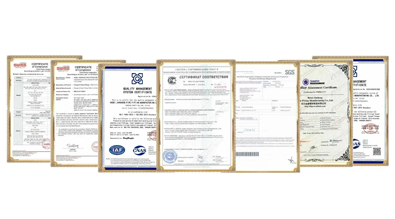
Welcome to RAYOUNG – Strong Pipes, Stronger Promise
